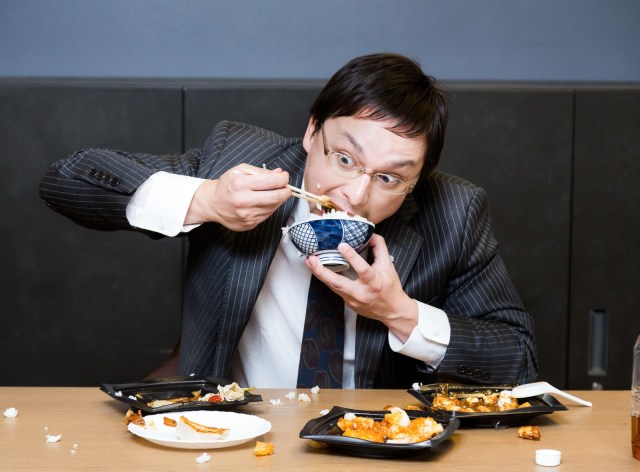
Wife says Japanese meals should be eaten in a triangle formation.
Japanese meals aren’t always as straightforward as they look. Even at breakfast time, a traditional spread can consist of multiple side dishes served alongside rice and miso soup, and while it might look like a free-for-all feast, there can be some taboos and pet peeves involved, depending on where you are and who you’re living with.
Some dining taboos, like dipping the rice-side of your sushi into soy sauce, and waving your chopsticks about while you talk, like Jordan Schlansky did during his visit to Japan with Conan O’Brien, are widely known. Then there are other examples of etiquette that are slightly more obscure, like eating your food in a triangle formation.
The notion of eating your meal in a triangle shape is one that made a stir online recently, following a complaint made by a disgruntled wife on the onayami free online discussion board. The site is a place where people can get answers and advice to all sorts of problems, and this wife’s vexation was that she couldn’t stand the way her husband eats.
What prompted the woman to air her grievances was the fact that she’d recently put a lot of care and effort into making a great side dish for dinner and was keen for her husband to enjoy the taste of the food. However, when she set it down on the table for him, instead of eating the side dish on its own, he put some of it in his mouth along with a portion of rice at the same time.
This set off a big argument between the couple, as the wife became upset that her husband had mixed up the flavours and therefore couldn’t fully enjoy the taste of the side dish. “Why are you always turning everything into a donburi inside your mouth? It’s disgusting,” she fumed, referring to donburi, a hearty one-bowl dish like gyudon or oyakodon, consisting of rice with a topping.
▼ Donburi are served in big bowls and are the polar opposite of expensive, multi-course kaiseki meals
Online commenters were quick to side with the husband on this one, saying that the no matter how good the meal is, it will become far less delicious if there’s no freedom in how it can be eaten. However, what this wife wanted her husband to do is follow the “sankaku tabe” (“triangular eating“) method, which is said to be the most balanced way to enjoy a Japanese meal.
“Sankaku tabe” has been taught in elementary schools around Japan since the ’70s as a way to ensure that children get the most nutrients out of their school lunches. As school lunches typically consist of rice, miso and a side dish, with milk on the side, it’s not difficult to follow the triangle method of eating at school.
Young children are taught to alternate between dishes in a triangular pattern (see image below) to ensure an equal amount of each is eaten.
▼ The act of chewing through different textures is also said to create a feeling of fullness to help prevent obesity.
Once you leave elementary school, things get a little complicated, as students eventually move on to eating bento lunchboxes, often without soup, and then as adults, it becomes a free-for-all, where old rules are forgotten and nobody is around to admonish you for the way you eat your meals.
Some people, however, remain lifelong fans of the sankaku tabe method, especially when eating traditional meals, which are based around the concept of “Ichiju Sansai” (“one soup, three dishes“). Triangle eating here takes on a few more angles due to the extra dishes, but the concept remains the same — alternating between each dish to enjoy their individual flavours, and not finishing all of one dish before the others.
Given its purported health benefits and the fact that it’s taught in schools, sankaku tabe is considered to be a conscientious, polite way of eating. At the opposite end of the spectrum is “bakkari tabe” (“only eating”), where the diner finishes each dish before moving on to the next, while “kouchuu choumi” (“seasoning inside the mouth”) describes the act of mixing the different dishes together in your mouth.
Kouchuu choumi is what the husband at the centre of this debate was caught doing, or as his wife puts it: “turning everything into a donburi inside your mouth”. While the married couple in this situation appear to be bickering over different eating methods, the advice she received after venting her frustrations was to refrain from making judgmental statements like “It’s disgusting”, and instead say something like: “I spent a lot of time making this dish nice so I wanted you to taste it on its own”.
▼ Another alternative would be to just ditch the rice and cook a meal at the table together instead.
The general consensus amongst Japanese commenters online has been leaning towards freedom of eating as you please, especially in the comfort of your own home. And as long as you can learn to communicate with your spouse respectfully, there’s scope for different eating methods to exist peacefully in the same household.
Although if you’re married to a woman who’s made a 100-plus-item menu for you to select meals from, you might want to bow down and yield to all and any of her requests, especially if giant rice cooker okonomiyaki pancakes are on the menu.
Source: Onayami Free via Livedoor News via Jin
Top image: Pakutaso
Insert images: Pakutaso (1, 2, 3) Flickr/Osamu Iwasaki (edited by SoraNews24), Wikipedia/Michael Maggs
● Want to hear about SoraNews24’s latest articles as soon as they’re published? Follow us on Facebook and Twitter!

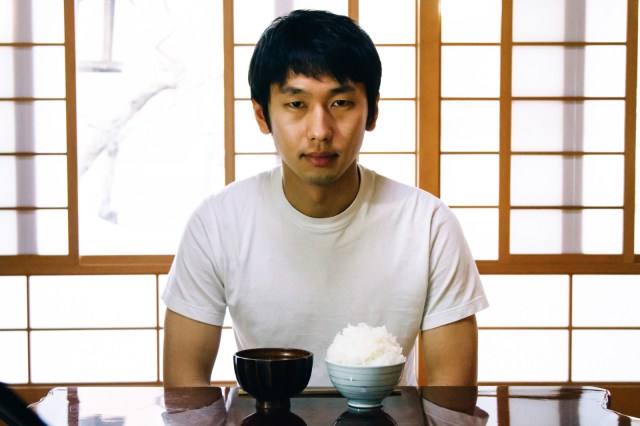
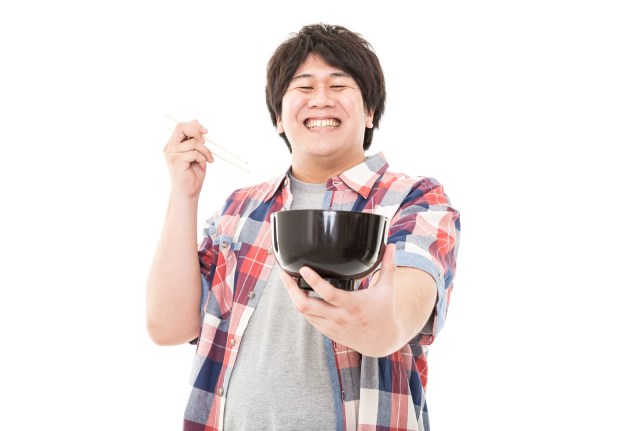
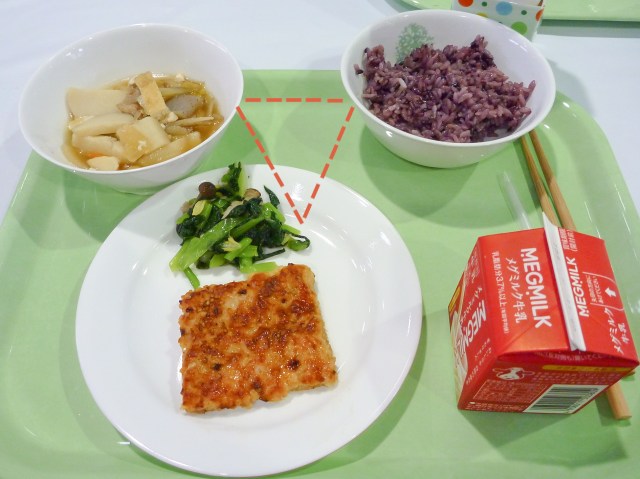
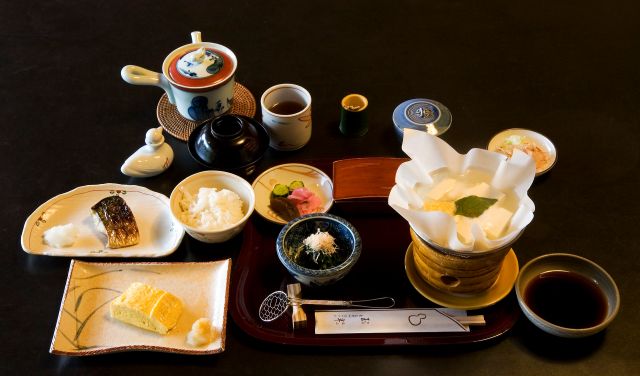
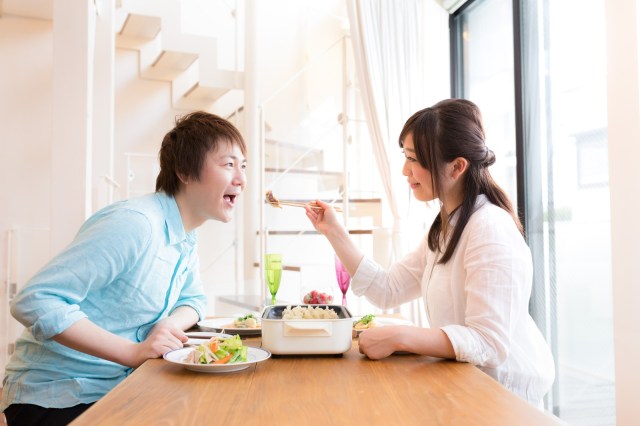
 Should you place miso soup on the right or the left?
Should you place miso soup on the right or the left? Bowl or chopsticks: Which one should you pick up first?
Bowl or chopsticks: Which one should you pick up first? New Japanese bowl-shaped donburi rice cooker cooks rice and toppings at the same time
New Japanese bowl-shaped donburi rice cooker cooks rice and toppings at the same time Japanese wife/artist solves “I don’t know. What do YOU want to eat?” problem in an awesome way
Japanese wife/artist solves “I don’t know. What do YOU want to eat?” problem in an awesome way Japanese wives reveal how they get revenge on their husbands
Japanese wives reveal how they get revenge on their husbands Hayao Miyazaki says Happy New Year to Studio Ghibli fans with new art for Year of the Horse
Hayao Miyazaki says Happy New Year to Studio Ghibli fans with new art for Year of the Horse We get lucky with a Wagyu beef gacha vending machine at 3,000 yen a pop
We get lucky with a Wagyu beef gacha vending machine at 3,000 yen a pop Mikado Coffee is a 76-year-old coffee chain with a major celebrity connection
Mikado Coffee is a 76-year-old coffee chain with a major celebrity connection Tried-and-tested ways to learn Japanese while having fun!
Tried-and-tested ways to learn Japanese while having fun! Japan’s master knife maker returns with a razor-sharp blade made out of plastic wrap【Video】
Japan’s master knife maker returns with a razor-sharp blade made out of plastic wrap【Video】 Professional manga artist creates stunning pop-up style artwork with just pencil & paper
Professional manga artist creates stunning pop-up style artwork with just pencil & paper Harajuku’s new permanent Tamagotchi shop is filled with cuteness and a surprising lack of poop
Harajuku’s new permanent Tamagotchi shop is filled with cuteness and a surprising lack of poop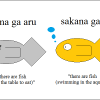 Seven mistakes foreigners make when speaking Japanese—and how to fix them
Seven mistakes foreigners make when speaking Japanese—and how to fix them Princesses, fruits, and blacksmiths: Study reveals the 30 most unusual family names in Japan
Princesses, fruits, and blacksmiths: Study reveals the 30 most unusual family names in Japan The best Starbucks Japan Frappuccinos we want to drink again in 2026
The best Starbucks Japan Frappuccinos we want to drink again in 2026 Starbucks Japan ready to get Year of the Horse started with adorable drinkware and plushies【Pics】
Starbucks Japan ready to get Year of the Horse started with adorable drinkware and plushies【Pics】 7-Eleven Japan’s ramen-cooking robot whipped us up a bowl of noodles【Taste test】
7-Eleven Japan’s ramen-cooking robot whipped us up a bowl of noodles【Taste test】 Cyberpunk anime meets traditional culture in Ghost in the Shell gold leaf Japanese changing screens
Cyberpunk anime meets traditional culture in Ghost in the Shell gold leaf Japanese changing screens 7 great places to see Mt. Fuji from without having to climb it
7 great places to see Mt. Fuji from without having to climb it Hello Kitty Choco Egg figures are an adorable trip through three periods of Japanese pop culture【Pics】
Hello Kitty Choco Egg figures are an adorable trip through three periods of Japanese pop culture【Pics】 Japan’s otoshidama tradition of giving kids money at New Year’s gets a social welfare upgrade
Japan’s otoshidama tradition of giving kids money at New Year’s gets a social welfare upgrade We found possibly the quietest Japanese-style hotel in Tokyo’s bustling Shinjuku district
We found possibly the quietest Japanese-style hotel in Tokyo’s bustling Shinjuku district Lacquerware supplier to emperor of Japan and Pokémon team up for new tableware
Lacquerware supplier to emperor of Japan and Pokémon team up for new tableware Sumo Sanrio! Hello Kitty and pals team up with Japan Sumo Association for new merch【Pics】
Sumo Sanrio! Hello Kitty and pals team up with Japan Sumo Association for new merch【Pics】 Can a dirty butthole make you filthy rich in Japan? We’re starting a New Year’s lottery experiment
Can a dirty butthole make you filthy rich in Japan? We’re starting a New Year’s lottery experiment 7-Eleven Japan starts new temporary luggage storage service in over 300 branches
7-Eleven Japan starts new temporary luggage storage service in over 300 branches Disillusionment at Tsukiji’s tourist-target prices led us to a great ramen restaurant in Tokyo
Disillusionment at Tsukiji’s tourist-target prices led us to a great ramen restaurant in Tokyo Starbucks teams up with 166-year-old Kyoto doll maker for Year of the Horse decorations【Photos】
Starbucks teams up with 166-year-old Kyoto doll maker for Year of the Horse decorations【Photos】 Tokyo considering law requiring more trash cans following litter increase in heavily touristed area
Tokyo considering law requiring more trash cans following litter increase in heavily touristed area Tokyo’s Tsukiji sushi neighborhood asks tour groups to stay away for the rest of the month
Tokyo’s Tsukiji sushi neighborhood asks tour groups to stay away for the rest of the month Nintendo’s Kirby now delivering orders at Kura Sushi restaurants, but not in Japan
Nintendo’s Kirby now delivering orders at Kura Sushi restaurants, but not in Japan Tokyo event lets you travel back in time, for free, to celebrate 100 years since Showa era start
Tokyo event lets you travel back in time, for free, to celebrate 100 years since Showa era start Sanrio theme park in Japan announces plans to expand into a Sanrio resort
Sanrio theme park in Japan announces plans to expand into a Sanrio resort Japan may add Japanese language proficiency, lifestyle classes to permanent foreign resident requirements
Japan may add Japanese language proficiency, lifestyle classes to permanent foreign resident requirements Survey asks foreign tourists what bothered them in Japan, more than half gave same answer
Survey asks foreign tourists what bothered them in Japan, more than half gave same answer Japan’s human washing machines will go on sale to general public, demos to be held in Tokyo
Japan’s human washing machines will go on sale to general public, demos to be held in Tokyo Japan’s deadliest food claims more victims, but why do people keep eating it for New Year’s?
Japan’s deadliest food claims more victims, but why do people keep eating it for New Year’s? We deeply regret going into this tunnel on our walk in the mountains of Japan
We deeply regret going into this tunnel on our walk in the mountains of Japan Studio Ghibli releases Kodama forest spirits from Princess Mononoke to light up your home
Studio Ghibli releases Kodama forest spirits from Princess Mononoke to light up your home Major Japanese hotel chain says reservations via overseas booking sites may not be valid
Major Japanese hotel chain says reservations via overseas booking sites may not be valid Put sesame oil in your coffee? Japanese maker says it’s the best way to start your day【Taste test】
Put sesame oil in your coffee? Japanese maker says it’s the best way to start your day【Taste test】 No more using real katana for tourism activities, Japan’s National Police Agency says
No more using real katana for tourism activities, Japan’s National Police Agency says Starbucks Japan reveals new sakura drinkware collection, inspired by evening cherry blossoms
Starbucks Japan reveals new sakura drinkware collection, inspired by evening cherry blossoms Updated cherry blossom forecast shows extra-long sakura season for Japan this year
Updated cherry blossom forecast shows extra-long sakura season for Japan this year 10 simple ways to ruin a Japanese wife’s day
10 simple ways to ruin a Japanese wife’s day The best place to eat Japanese breakfast for US$2: Cheap food hack for locals and tourists
The best place to eat Japanese breakfast for US$2: Cheap food hack for locals and tourists Japanese Twitter user shares the phrase a man should never say to his wife
Japanese Twitter user shares the phrase a man should never say to his wife What jobs would make a woman an attractive wife to Japanese men?【Survey】
What jobs would make a woman an attractive wife to Japanese men?【Survey】 Japan’s one-person bento box-sized rice cooker gets double-decker version that cooks side dishes too
Japan’s one-person bento box-sized rice cooker gets double-decker version that cooks side dishes too Humbug! Japanese wives in international marriages share what they hate about Christmas overseas
Humbug! Japanese wives in international marriages share what they hate about Christmas overseas Is it OK to put other food on top of your white rice when eating in Japan?
Is it OK to put other food on top of your white rice when eating in Japan? Japanese wife creates izakaya pub at home during coronavirus outbreak
Japanese wife creates izakaya pub at home during coronavirus outbreak Furikake rice seasoning sales are soaring, which is bad news for Japan as a whole
Furikake rice seasoning sales are soaring, which is bad news for Japan as a whole Rice balls, sushi and ramen: Japanese women share what they’d eat for their last meal
Rice balls, sushi and ramen: Japanese women share what they’d eat for their last meal Japanese-inspired Australian tea and rice bowl shop makes debut in Japan
Japanese-inspired Australian tea and rice bowl shop makes debut in Japan Japanese men rank the top 10 complaints they hope to never hear from their wives
Japanese men rank the top 10 complaints they hope to never hear from their wives The polite way to eat onigiri rice balls sparks debate online
The polite way to eat onigiri rice balls sparks debate online Taco rice at Japanese beef bowl chain Sukiya proves you can never eat a bad taco rice
Taco rice at Japanese beef bowl chain Sukiya proves you can never eat a bad taco rice You need this instant Japanese curry rice if you hate cooking but want to eat a balanced diet
You need this instant Japanese curry rice if you hate cooking but want to eat a balanced diet
Leave a Reply